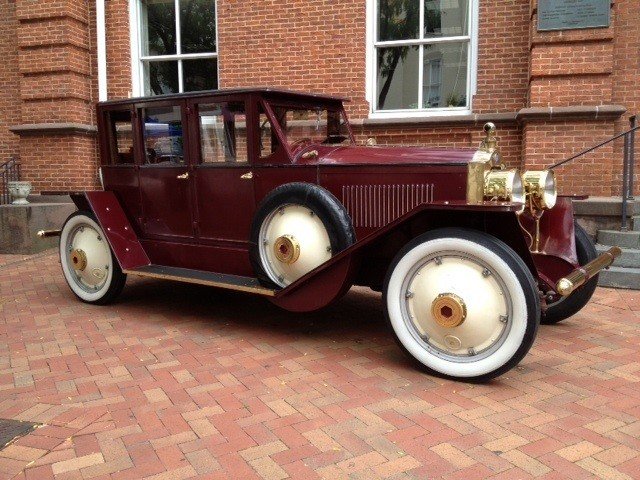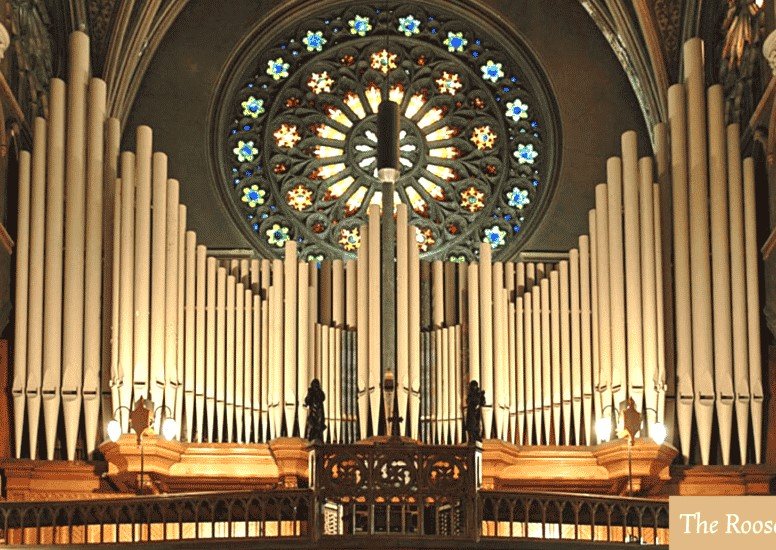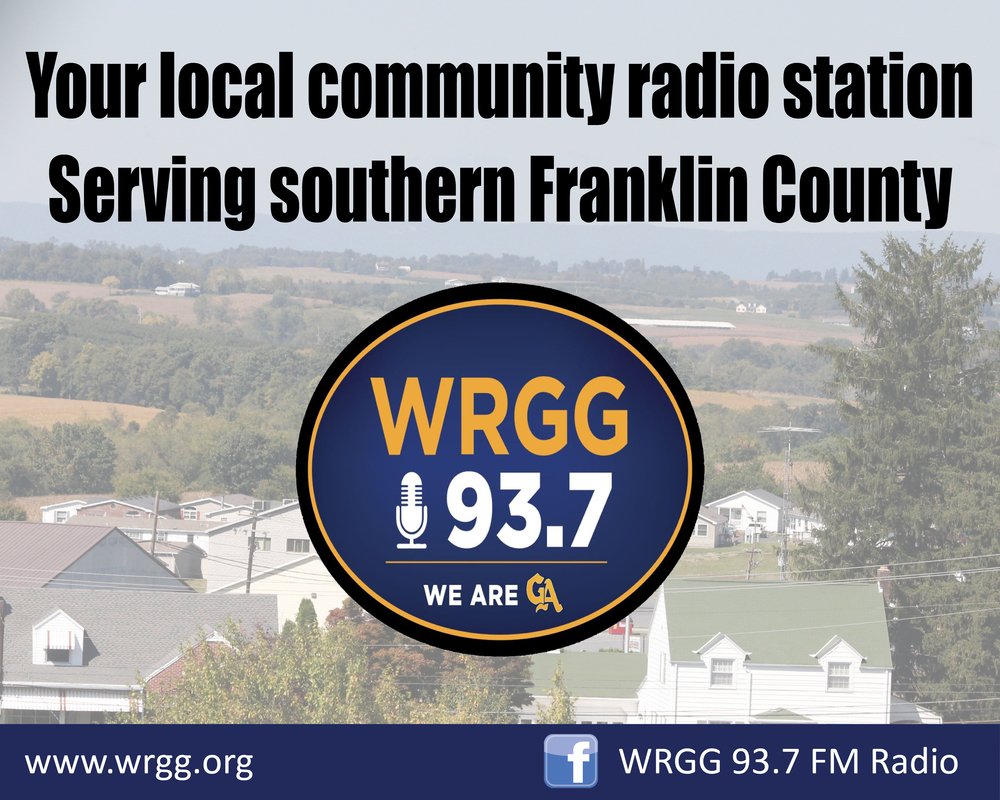Every December, music is an essential holiday score for enjoying traditions and creating lasting memories. For more than a century, Hagerstown’s M.P. Moller Pipe Organ Company built instruments that brought those melodies to life, producing organs that played musical notes but were also highly crafted works of art.
Mathias Peter Moller was born on Sept. 29, 1854, on the Danish island of Bornholm. He emigrated to the U.S. in 1872 and found work as a cabinet maker in Erie. Pa. After learning the pipe organ trade, young Mathias started M.P. Moller Pipe Organ Company in Greencastle, Pa., in 1875. Wise Hagerstown city officials recognized his early successes and lured Moller’s firm to Maryland in 1881.

In the company’s earliest years, most Moller organs were housed and appreciated in churches. As congregants gathered each Sunday for worship, skilled organists sat at Moller organ keyboards. They immersed themselves in an instrument with rich sound that was beautifully handcrafted and also versatile and reliable.
Moller organs commonly played German hymns, a favorite due to local native ancestry, but they also skillfully arranged other nationality songs and contemporary American music as well. “Every organist falls in love with a Moller,” a church keyboardist in Philadelphia recently said. The reason the instruments were so highly regarded was each organ was custom-built to complement the architecture and acoustics of individual spaces. This commitment required a highly detailed design process that usually took months, and sometimes years, to complete.
Moller used up to 20 wood types for the consoles, including poplar, oak, maple and pine. Exotic woods like mahogany were often used to match the interior decor where the organ was installed.
The pipes were mostly composed of a tin/lead alloy, and the pipe’s lengths determined pitch. Some pipes were as small as 3/8 of an inch, while others could reach 32 feet long. A small organ would typically employ 200 pipes, medium ones contained 1200-1500, and the largest organs boasted an astounding 12,000 pipes. Moller used both reed pipes and flute pipes to create inspiring musical tones.

Today, many of these organs still resonate in church services all over the United States. Some have been lovingly restored, as instruments with that level of complexity will eventually need a complete overhaul. Over the years, Moller expertly supervised hundreds of these restorations for clients or recalibrated tones when an organ was transferred to a new location.
In the early 1900s, Moller continued with new innovations, developing tubular-pneumatic technology, and later instituted electro-pneumatic actions for his products. He believed any organization that wanted a Moller organ should be able to afford one. His company built many “Portable” and “Artiste” lower-priced models that used standard specifications and fewer pipes.As a result, many new locations (funeral homes, entertainment spaces, restaurants and private homes) became proud owners of a Moller organ.
The Moller Pipe Organ Company also began a profitable association with American service academies, constructing an “Opus 1200” model for the United States Military Academy Cadet Chapel in 1911. Today, this organ (which was modified over the years) is the world’s largest all-pipe organ housed in a religious structure. Later, in 1940, Moller rebuilt the Naval Academy organ at Annapolis and created a new instrument for the United States Air Force Academy in 1963.

Moller snared another lucrative market when grand theaters were constructed across America. The company designed a different organ style that could accompany an orchestra or even serve as a one-man band. These specialized instruments mimicked the sound of a bass drum, tambourine, castanets or other stand-alone instruments through the organ’s keyboard. During the 1920s silent film era, a Moller organ was a vital element in the audience experience as its sound heightened the tension and drama seen onscreen.
Unfortunately, most of those theaters vanished, along with their Moller organs. But in Atlanta, the Fox Theatre escaped demolition, and a 1929-model nicknamed “Mighty Mo” is still in operation after a recent restoration. Fox organist Ken Double says he employs 17 simultaneous brain functions to play that instrument, all without reading sheet music. “There are so few of these organs left,” he said. “It’s a thrill to play it.” Due to the highly specialized skills required to master these intricate theater models, Double estimated fewer than 20 people worldwide could play an instrument like Mighty Mo in true concert fashion.
Also, during the 1900s, M.P. Moller bought the Crawford Automobile Company, which manufactured touring cars in Hagerstown. They promoted a sports car called the “Dagmar” (named after Moller’s oldest daughter), won a large contract to build taxis and raced their sleek automobile in the 1916 Indy 500. Ultimately, the Crawford auto business didn’t survive, producing its final car in 1927.

M.P. Moller died in 1937, but his Hagerstown organ company, inspired by his dedication and leadership, continued onward.
When World War II broke out, Moller Company and several other Hagerstown manufacturers made a remarkable transition. They applied their craftsmanship and labor force to help the war effort. At that time, the “Hub City” was home to Fairchild, an aircraft company tasked with building PT-19’s to train army pilots. Moller’s skilled woodworkers built wooden wing components for Fairchild as part of Hagerstown’s patriotic team effort.
The Moller Company thrived in Hagerstown post-war, returning to its main product line. They began building larger and more sophisticated organs. In 1944, they acquired Henry Pilcher’s Sons Inc., a Louisville-based organ company. This growth allowed Moller to compete with larger firms, and they secured a contract to produce a pair of organs for the Basilica of the National Shrine of the Immaculate Conception in Washington, D.C.
That same year, Moller produced a mammoth four-manual organ for St. Paul the Apostle Church in New York City. Virgil Fox, a famous and flamboyant American organist, recorded “The Christmas Album” on that same St. Paul’s organ in 1965. Another major Moller project was the Buffalo Central Presbyterian Church in 1966. Moller’s largest all-new organ project, the “Opus 11739,” was installed at Calvary Church in Charlotte, N.C., in 1990.

The Moller Pipe Organ Company’s demise occurred in 1993. After suffering from lagging plant investment, labor issues, high production costs and competition from electronic organs, Moller delivered its last instrument to Chapel by the Sea in Fort Myers, Florida. Investors tried to save the Moller factory and its assets, but efforts to find new projects resulted in only a few refurbishing jobs, and the company closed permanently.
However, Moller’s pipe organs artistic and musical legacy lives on. The company produced more than 12,000 instruments, and hundreds have been saved and restored. These works of art still perform for reverent worshippers, enthusiastic concertgoers and other music lovers across the country.
M.P. Moller was a classic example of a hard-working and successful immigrant who helped shape Hagerstown into a thriving commercial city. His drive as a businessman and his commitment to artistic excellence produced a cherished product that still inspires today.




























